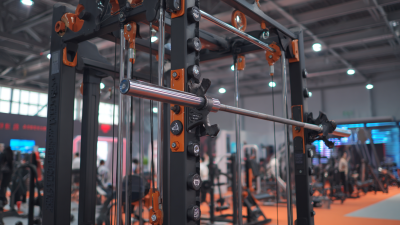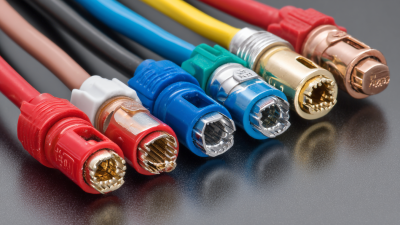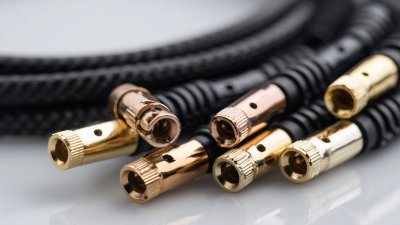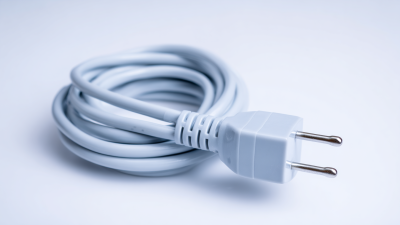Maximize Your Power: Understanding the Safety and Efficiency of Extension Leads in 2023
In 2023, the use of extension leads has become increasingly vital in both residential and commercial settings, providing a convenient solution for powering multiple devices from a single outlet. As our dependence on technology grows, understanding the safety and efficiency of extension leads is paramount. This article delves into the essential aspects of extension leads, exploring how to use them safely while maximizing their benefits. With advancements in design and functionality, today's extension leads are not only more efficient but also offer enhanced safety features that mitigate risks associated with overloading and surges. By examining the best types of extension leads available in the market and providing essential tips for optimal usage, we aim to empower users to make informed decisions that will enhance their power distribution and overall electrical safety.

The Importance of Choosing the Right Extension Lead Rating for Safety and Efficiency
When selecting an extension lead, the importance of choosing the correct rating cannot be overstated. According to industry standards, extension leads are available with various amp ratings, typically ranging from 10A to 16A. A report from the National Electrical Manufacturers Association (NEMA) indicates that using an extension lead with a rating lower than your appliance requirements can lead to overheating and potential fire hazards. For instance, a device that draws 12A should always be paired with at least a 13A extension lead to ensure safe operation.
Additionally, efficiency plays a critical role in the performance of extension leads. The Electrical Safety Foundation International (ESFI) highlights that properly rated extension leads can minimize energy loss, which not only saves money but also reduces environmental impact. When a lead is appropriately rated, it helps maintain optimal voltage levels, ensuring that appliances operate effectively without risking damage. By investing in quality extension leads with the right ratings, consumers can enhance safety, boost efficiency, and reduce the overall carbon footprint of their electrical usage.
Evaluating the Ampacity: Understanding Load Capacity in Extension Leads
 When evaluating the safety and efficiency of extension leads, understanding their load capacity—or ampacity—is crucial. Ampacity refers to the maximum amount of electric current a conductor or device can carry before failing due to overheating. Choosing the correct extension lead involves knowing the required amperage for the devices you plan to connect. For example, using a 14- or 16-gauge extension cord for high-amperage devices can result in overheating and potential fire hazards. Therefore, selecting an extension lead that matches or exceeds the amperage needs of your equipment is essential for safe operation.
When evaluating the safety and efficiency of extension leads, understanding their load capacity—or ampacity—is crucial. Ampacity refers to the maximum amount of electric current a conductor or device can carry before failing due to overheating. Choosing the correct extension lead involves knowing the required amperage for the devices you plan to connect. For example, using a 14- or 16-gauge extension cord for high-amperage devices can result in overheating and potential fire hazards. Therefore, selecting an extension lead that matches or exceeds the amperage needs of your equipment is essential for safe operation.
Recent surveys reveal that a significant number of electric vehicle owners have resorted to using extension cords for charging. While this practice may seem convenient, it emphasizes the need for proper load assessment in extension cords. It’s vital to remember that not all extension cords are created equal; some may not support the amperage required for charging vehicles safely. For optimal performance and to minimize risks associated with overheating, it is recommended to plug EV chargers directly into an outlet designed to handle their amperage, thereby avoiding the use of multiple adapters or improperly rated extension leads.
Top Safety Features to Look for in Modern Extension Leads in 2023
When selecting modern extension leads in 2023, it's essential to prioritize safety features that ensure both efficiency and protection against potential hazards. According to a recent report by the National Electrical Manufacturers Association (NEMA), over 70% of electrical fires are caused by outdated or faulty equipment, underscoring the importance of investing in high-quality extension leads. Look for models equipped with surge protection, which can safeguard devices from voltage spikes. Additionally, built-in circuit breakers are crucial, as they can automatically cut off power during overloads, significantly reducing the risk of short circuits.
Another critical safety feature to consider is the use of heat-resistant and durable materials. The Underwriters Laboratories (UL) standards recommend extension leads crafted from fire-retardant materials to minimize fire risks. In 2023, many leading manufacturers have started incorporating smart technology, which allows users to monitor energy consumption and detect faults via mobile apps. This not only enhances user control but also improves safety by providing real-time alerts about any irregularities in power use. Embracing these innovations can lead to a safer and more efficient electrical setup for home and office use.
The Impact of Cable Length on Voltage Drop and Power Efficiency
When utilizing extension leads, understanding the influence of cable length on voltage drop and power efficiency is paramount. Research indicates that a longer cable can result in significant voltage drops, often exceeding 3% over distances greater than 50 feet (15 meters). This voltage drop can result in underperformance of electrical devices and increased energy waste. According to a report by the National Electrical Manufacturers Association (NEMA), cables that are correctly sized and kept short can help maintain efficiency, ensuring that the power delivered is closer to the intended output.

Tips for minimizing voltage drop include choosing the appropriate gauge of extension lead. For instance, a thicker wire (lower gauge number) can handle higher currents with less resistance, reducing the potential voltage drop over longer distances. It’s also advisable to avoid daisy-chaining multiple extension leads, as this can exacerbate both voltage drop and safety concerns. Furthermore, regularly inspecting extension leads for wear and damage is crucial to maintaining their efficiency and prolonging their lifespan.
Additionally, load management plays a critical role in power efficiency when using extension leads. It’s essential to calculate the total wattage of devices connected to ensure you do not exceed the capacity of the lead, which can lead to overheating and energy loss. Adopting these practices can lead to not only enhanced safety but also greater energy efficiency in your electrical setup.
Best Practices for Extending Power Safely in Residential and Commercial Settings
When extending power in residential and commercial settings, safety should be the paramount concern. One of the best practices is to select high-quality extension leads that are compliant with relevant safety standards. Look for leads that have built-in circuit breakers and surge protection to prevent overloads and electrical faults. Additionally, ensure that the extension lead is rated for the load it is expected to carry; using an under-rated lead can lead to overheating and fire hazards.
Proper usage of extension leads is also crucial. Avoid daisy-chaining multiple leads together, as this increases the risk of electrical shock and fire. Instead, use a single, adequately rated extension lead to cover your power needs. Furthermore, ensure that the leads are kept in well-ventilated areas and are not placed under rugs or furniture, which can trap heat.
Regularly inspect extension leads for damage, such as frayed wires or loose connections, and replace any leads that show signs of wear. By following these best practices, you can safely maximize your power usage without compromising on efficiency.
Related Posts
-

How to Maximize Your Gains with a Smith Machine with Cables for Effective Resistance Training
-

Exploring Market Potential: Smith Machines with Cables at the 2025 China Import and Export Fair
-

What are Electrical Wire Connectors? Exploring Their Types, Uses, and Market Trends in 2023
-

How to Choose the Best Waterproof Wire Connectors for Your Projects
-

5 Reasons Why Wire EDM is the Best Choice for Precision Manufacturing in 2023
-

Challenges in Utilizing Flat Plug Extension Cords: Insights from Industry Data and Trends